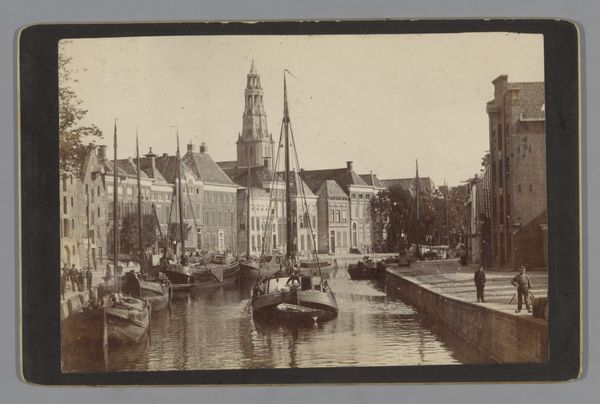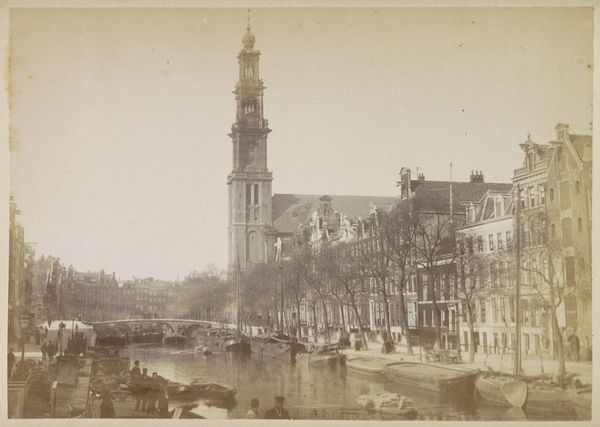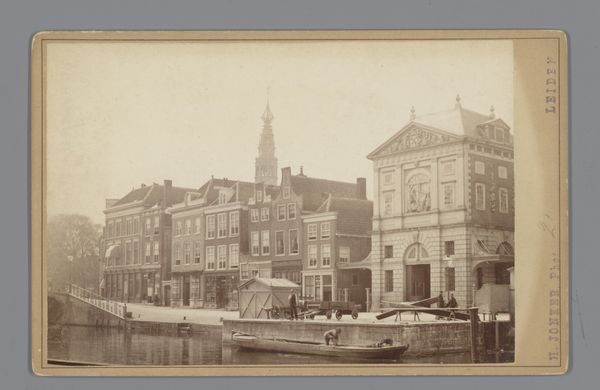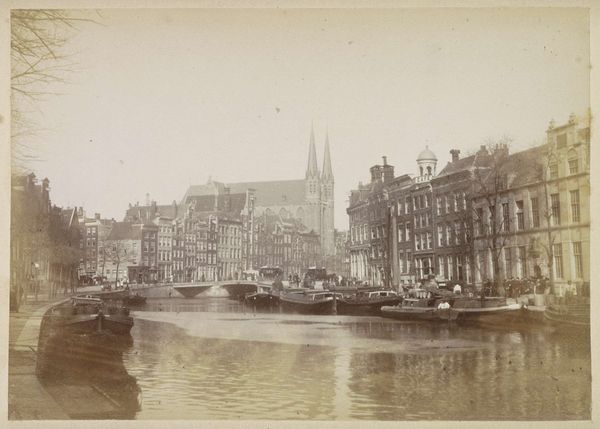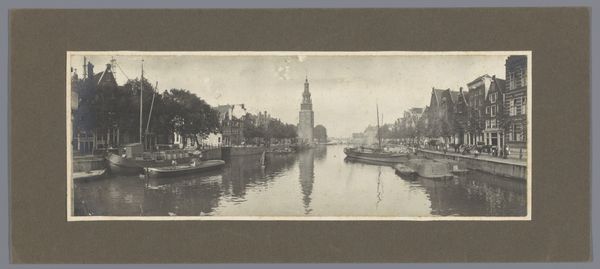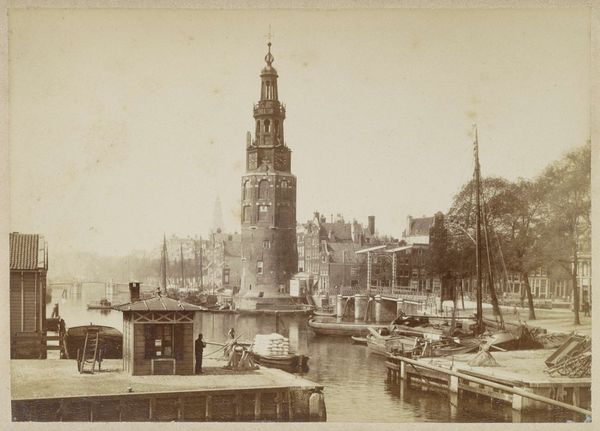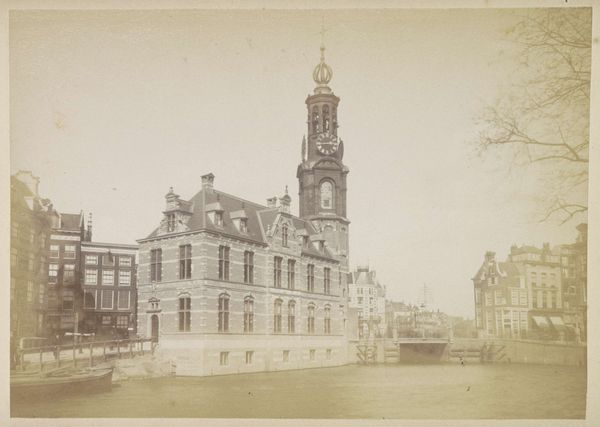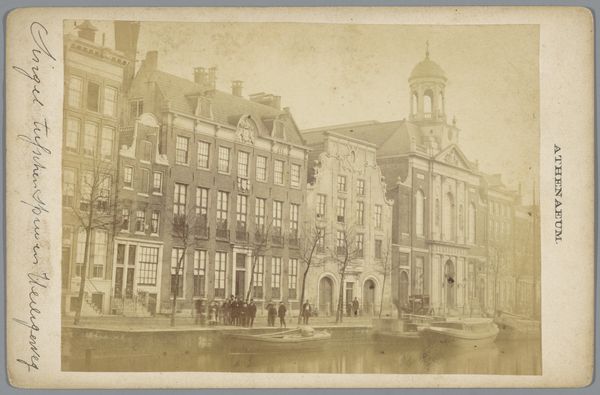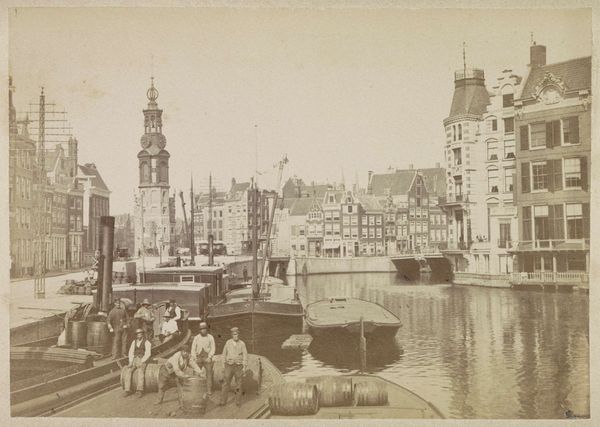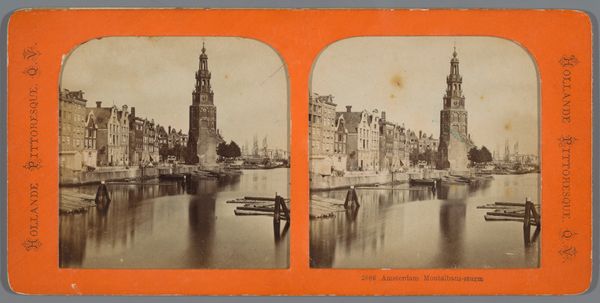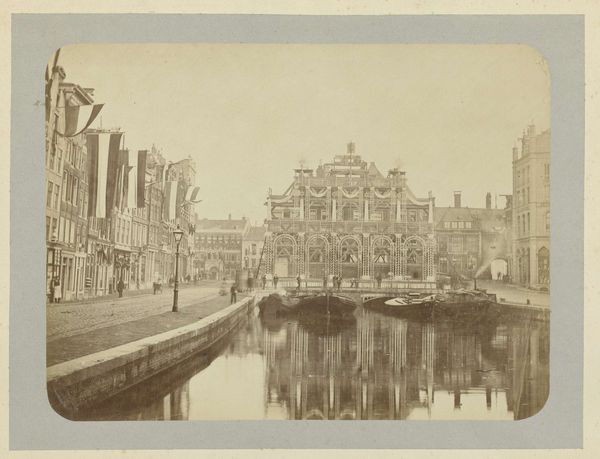
Gezicht op het Damrak met op de achtergrond de torens van de Oude Kerk en de Zuiderkerk te Amsterdam 1890 - 1898
0:00
0:00
photography, albumen-print
#
dutch-golden-age
#
landscape
#
photography
#
cityscape
#
street
#
watercolor
#
albumen-print
Dimensions: height 187 mm, width 240 mm
Copyright: Rijks Museum: Open Domain
Curator: This albumen print captures a view of the Damrak in Amsterdam, placing us somewhere between 1890 and 1898. Notice the Oude Kerk and Zuiderkerk spires in the background. What strikes you most about this early photograph? Editor: Immediately, the sheer weight of history. The tones evoke a bygone era; almost sepia, highlighting the endurance of these buildings over time. Those church spires… they dominate the skyline. There’s an undeniable solemnity, don’t you think? Curator: I agree. Beyond that feeling, it provides a lens through which we can consider socio-economic shifts within Amsterdam. Look at the bustling waterway in contrast with the rigid, orderly facades of the buildings. This dichotomy raises questions about the relationship between commerce, power, and spatial organization during that period. Editor: Absolutely. Waterways and their relationship to power were vital arteries for cultural and economic transfer. Boats recur as powerful symbols: vessels for journeys of every kind, be they personal, spiritual, or material. Curator: Precisely. Moreover, the positioning of the churches towering over commercial activities can reflect the enduring influence of the church as it intersects with Amsterdam’s financial power, despite the societal changes underway. This image captures the tension between these long-standing traditions and developing capitalism. Editor: What truly interests me is how deeply embedded in our visual cortex architecture is, especially that of churches. These forms act as beacons, simultaneously representing sanctuary and authority, heaven and the earthly realm, resonating long after the specific doctrines might fade. The towers here reach to the sky, symbolizing aspirations to transcend the world and connect with a higher power. Curator: An apt assessment. The Damrak, shown here, becomes more than just a street; it’s a stage upon which economic, social, and spiritual dramas play out, reflecting the city's complex identity. Editor: In looking at this again, it reminds me how we are all linked through the images that surround us, influencing our perception, understanding, and experience. Curator: And understanding that complexity through art allows for meaningful dialogue about historical and cultural continuities and disparities, which is, perhaps, why we find such pieces so fascinating.
Comments
No comments
Be the first to comment and join the conversation on the ultimate creative platform.
